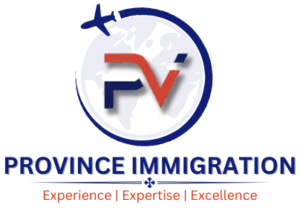Schengen Visa 2024
Table of Content
Schengen Visa
With a Schengen Visa, you may travel freely between the 27 countries that are members of the Schengen region without having to go through any border checks. It permits you to spend up to 90 days travelling or conducting business inside the borders of the Schengen States.
The majority of European nations are included in the Schengen region, which is an EU passport-free zone. If you want to stay, work, or study in any of the Schengen nations for a period longer than ninety days, you must apply for a national visa of that nation in addition to the Schengen Tourist Visa.
What is a Schengen visa?
You can travel to any number of Schengen zone countries with a valid Schengen Visa during that time.
- You are limited to 90 days in six months to travel through or remain on Schengen State territory.
- Additionally, you can travel across the Schengen States’ international transit zones at airports (with an airport transit visa).
- If you want to stay in a Schengen nation for work, a profession, trade, or a business establishment, you should not apply for a Schengen Tourist Visa.
The 27 Schengen countries include 23 European Union countries and 4 Non-European Union Countries.
22 European Union Countries | |
Austria | Belgium |
Czech Republic | Denmark |
Estonia | Finland |
France | Germany |
Greece | Hungary |
Italy | Latvia |
Lithuania | Malta |
Netherlands | Poland |
Portugal | Spain |
Slovakia | Slovenia |
Sweden | Croatia |
4 Non-European Union Countries | |
Iceland | Liechtenstein |
Norway | Switzerland |
Types of Schengen visa
There are 3 main types of Short-Stay Europe Visas. These include:
Short Stay or Travel Visa (Type C)
Most people refer to this kind of visa as a “Schengen Visa.” It is primarily granted as a Schengen Visa for travel. It is also given out for athletic events and get-togethers with loved ones.
You have six months from the date of issuance of this visa to travel to multiple Schengen nations for up to sixty days each. It is possible to receive this visa for one, two, or multiple entries.
Airport Transit Visas (Type A)
- This kind of visa enables you to link an international transit zone at an airport located in a Schengen country to an aircraft from a non-Schengen nation.
- This form of visa, however, does not permit exiting the airport or entering any Schengen country for any reason.
- According to the European Union, certain nationals of such countries are required to hold an airport transit visa. For them, it is necessary to pass through an airport in any Schengen state.
Transit Visa (Type B)
With this Transit Visa, you can travel by vehicle or coach from a non-Schengen nation across the territory of a Schengen state.
If you are travelling by air and must exit the international transit region to enter Schengen territory, you may even need a transit visa.
As long as you stay in the Schengen Area for more than five days, you can get these transit visas for one, two, or multiple transits.
Eligibility criteria for a Schengen Visa
Travel to the Schengen Countries is permitted for nationals of the aforementioned nations. Within 180 days, they are permitted to spend up to 90 days living in the Schengen Zone.
However, to be eligible for this program, you must meet the prerequisites listed below:
- You must have a current passport.
- You must have a current Schengen Visa.
- To fulfil the insurance criteria for a Schengen Visa, a medical insurance meeting is required.
- You must present the paperwork supporting your journey and proving its purpose.
- Must verify that you have enough money to buy a ticket or that you have a return ticket.
Documents Required for a Schengen Visa
A list of the documents that must be sent with the application for a Schengen visa.
- Schengen Visa Application Form
- 2 Recent Passport-Size Photos
- Your Valid Passport
- Itinerary or Round-Trip Flight Reservation
- Travel Insurance Policy
- Proof of Accommodation
- Proof of Financial
- Proof of Payment of Visa Fees
Apply for a Schengen Visa
Follow these simple steps to succeed in obtaining a Schengen Visa:
- Step 1: Find out which Schengen Visa type you require
- Step 2: Figure out where you need to apply
- Step 3: Finding the most suitable time to apply
- Step 4: Booking an appointment
- Step 5: Filling out the visa application form
- Step 6: Gathering the required documents
- Step 7: Attending the visa interview
- Step 8: Paying the visa application fee
- Step 9: Waiting for an answer to your Schengen Visa application
Cost of a Schengen Visa
Here’s a cost breakdown:
Schengen Visa Category | Fee in EUR |
Adult | 80 |
Children between 6 – 12 years of Age | 40 |
Children below 6 years of Age | Free |
Diplomats Travelling for Official Purposes | Free |
Family Member of EU/EEA Nationals | Free |
Pupils, Students & Accompanying Teachers | Free |
Researchers Travelling for Scientific Research | Free |
Citizens from Armenia, Azerbaijan & Russia | 35 |
Processing Time for a Schengen Visa
Visa processing typically takes 7 to 14 days. This might vary, though, according to the nation to which the application is submitted and the level of verification needed.
How Can Province Immigration Help You?
- Profile Evaluation: We check your particular profile history with the criteria for visa eligibility and advise you as to which visas you need to apply for.
- Resume Writing: We assist you in preparing a CV that attracts the attention of the relevant immigration authority.
- Obtaining documents: Assist you in gathering the paperwork required to apply for a visa.
- professional direction: We are always here to help you, whether with interview preparation, French/English classes, working samples for resumes and cover letters, or help with application forms, medical clearance certificates, or police clearance certificates.
- Dedicated Case Officer: Throughout the process, we provide you with individualized support and serve as the company’s primary point of contact.
- Post-Landing Services: After getting your visa, we assist you in settling down in the nation. These services are specially tailored to meet your needs. With Province Immigration, you can anticipate a one-stop solution for all of your visa needs, including profile evaluation, documentation, application preparation, and post-visa services.


